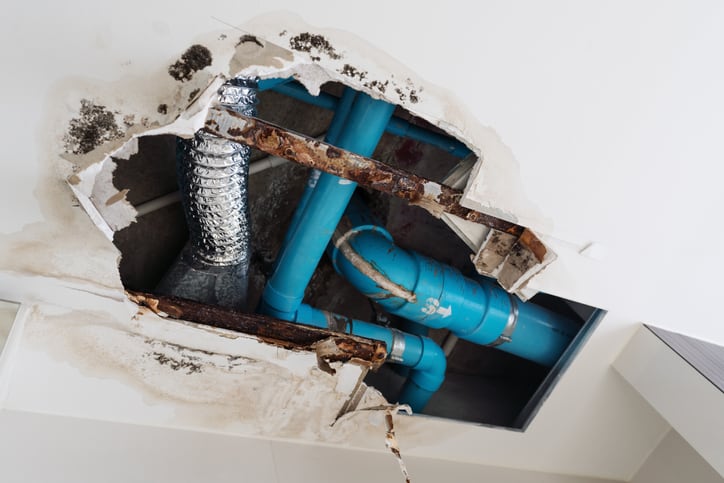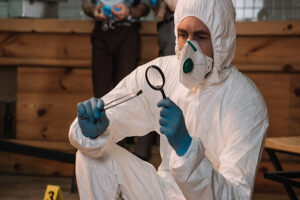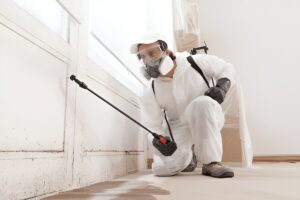Mold detection is a critical concern for homeowners and businesses in Union, NJ. The presence of mold can lead to significant health risks, particularly for individuals with respiratory issues, allergies, or compromised immune systems. Understanding the importance of mold detection and remediation is essential for maintaining a safe and healthy environment. This article will explore various aspects of mold detection in Union, NJ, including its health implications, detection methods, remediation processes, and how to choose the right professionals for the job.

Understanding Mold and Its Health Risks
Mold is a type of fungus that thrives in damp and humid environments. It can grow on various surfaces, including wood, drywall, and carpets. While mold plays a natural role in the ecosystem by breaking down organic matter, its presence indoors can pose serious health risks.
Common Health Issues Associated with Mold Exposure
Exposure to mold can lead to a range of health problems, particularly for sensitive individuals. Some of the most common health issues include:
- Respiratory Problems: Mold spores can irritate the respiratory system, leading to symptoms such as coughing, sneezing, and difficulty breathing.
- Allergic Reactions: Many people are allergic to mold, which can trigger symptoms like nasal congestion, itchy eyes, and skin rashes.
- Asthma Attacks: For individuals with asthma, mold exposure can exacerbate symptoms and lead to severe asthma attacks.
- Long-term Health Effects: Prolonged exposure to mold can result in chronic respiratory conditions, sinus infections, and other serious health issues.
Vulnerable Populations
Certain groups are more susceptible to the adverse effects of mold exposure, including:
- Children: Their immune systems are still developing, making them more vulnerable to respiratory issues.
- Elderly Individuals: Older adults may have weakened immune systems, increasing their risk of severe reactions.
- Individuals with Pre-existing Conditions: Those with asthma, allergies, or other respiratory conditions should be particularly cautious.
The Importance of Mold Detection
Detecting mold early is crucial for preventing health issues and property damage. Mold can grow rapidly in the right conditions, making it essential to identify and address any potential problems as soon as possible.
Signs of Mold Presence
Homeowners should be vigilant for signs of mold growth, which may include:
- Visible Mold Growth: Dark spots or patches on walls, ceilings, or floors.
- Musty Odors: A persistent, unpleasant smell can indicate hidden mold.
- Water Damage: Signs of water leaks or damage can create an environment conducive to mold growth.
- Increased Allergic Reactions: If family members experience unexplained allergy symptoms, mold may be the culprit.
Benefits of Early Detection
Early mold detection can lead to:
- Health Protection: Reducing exposure to mold can prevent health issues for residents.
- Cost Savings: Addressing mold problems early can prevent more extensive damage and costly repairs.
- Improved Indoor Air Quality: Removing mold can enhance the overall air quality in a home or business.
Methods of Mold Detection
There are several methods for detecting mold in residential and commercial properties. Understanding these methods can help property owners take proactive steps in identifying mold issues.
Visual Inspection
A thorough visual inspection is often the first step in mold detection. This involves checking for visible signs of mold growth, water damage, and areas prone to moisture accumulation, such as:
- Bathrooms: High humidity levels can lead to mold growth in showers and around sinks.
- Kitchens: Leaks from appliances or plumbing can create damp conditions.
- Basements and Crawl Spaces: These areas are often dark and humid, making them ideal for mold growth.
Air Quality Testing
Air quality testing can help identify the presence of mold spores in the air. This method involves:
- Collecting Air Samples: Air samples are taken from various locations within the property.
- Laboratory Analysis: Samples are sent to a laboratory for analysis to determine the types and concentrations of mold present.
Surface Testing
Surface testing involves taking samples from suspected moldy areas. This can be done using:
- Swab Tests: A swab is used to collect samples from surfaces where mold is suspected.
- Tape Lift Samples: A piece of tape is applied to a surface to capture mold spores for analysis.
Professional Mold Inspections
For comprehensive mold detection, hiring a professional mold inspector is often the best option. These experts have the training and equipment necessary to identify mold issues accurately. They typically conduct:
- Detailed Inspections: Professionals will inspect all areas of the property, including hidden spaces.
- Advanced Testing: They may use specialized equipment, such as moisture meters and thermal imaging cameras, to detect hidden mold.
Mold Remediation Process
Once mold has been detected, it is essential to address the issue promptly through a thorough remediation process. This involves several key steps to ensure that mold is safely and effectively removed.
Assessment and Planning
The first step in the remediation process is to assess the extent of the mold problem. This includes:
- Identifying the Source of Moisture: Understanding what caused the mold growth is crucial for preventing future issues.
- Developing a Remediation Plan: A detailed plan will outline the steps needed to remove the mold and restore the affected areas.
Containment
To prevent mold spores from spreading during the remediation process, containment measures are implemented. This may involve:
- Sealing Off Affected Areas: Using plastic sheeting to isolate the contaminated areas from the rest of the property.
- Setting Up Negative Air Pressure: Using air scrubbers to create negative pressure, which helps contain mold spores.
Removal and Cleanup
The actual removal of mold involves several steps:
- Removing Contaminated Materials: Any materials that cannot be salvaged, such as drywall or carpeting, should be removed and disposed of properly.
- Cleaning Surfaces: Non-porous surfaces should be cleaned with appropriate cleaning solutions to eliminate mold spores.
- Disinfecting: After cleaning, surfaces may be treated with disinfectants to kill any remaining mold spores.
Restoration
Once the mold has been removed, restoration work may be necessary to return the property to its original condition. This can include:
- Repairing Water Damage: Fixing leaks or water damage that contributed to mold growth.
- Replacing Materials: Installing new drywall, flooring, or other materials that were removed during the remediation process.
Choosing the Right Mold Detection Professionals
Selecting the right professionals for mold detection and remediation is crucial for ensuring a successful outcome. Here are some tips for finding qualified experts in Union, NJ.
Look for Certifications and Experience
When searching for mold detection professionals, consider their certifications and experience. Look for:
- Certified Mold Inspectors: Professionals should have certifications from recognized organizations, such as the Institute of Inspection, Cleaning and Restoration Certification (IICRC).
- Experience in the Field: Choose companies with a proven track record in mold detection and remediation.
Read Reviews and Testimonials
Customer reviews and testimonials can provide valuable insights into the quality of service offered by mold detection professionals. Look for:
- Positive Feedback: Check for consistent positive reviews regarding the company’s services.
- Detailed Experiences: Look for reviews that provide specific details about the inspection and remediation process.
Request Estimates
Before hiring a mold detection company, request estimates from multiple providers. This will help you:
- Compare Costs: Understand the average costs for mold detection and remediation services in your area.
- Evaluate Services Offered: Ensure that the services included in the estimate align with your needs.
Preventing Mold Growth
Once mold has been detected and removed, it is essential to take steps to prevent future growth. Here are some effective strategies for mold prevention.
Control Humidity Levels
Maintaining appropriate humidity levels in your home or business is crucial for preventing mold growth. Consider the following:
- Use Dehumidifiers: Dehumidifiers can help reduce humidity levels, particularly in damp areas like basements.
- Ventilation: Ensure proper ventilation in areas prone to moisture, such as bathrooms and kitchens.
Address Water Leaks Promptly
Any water leaks should be addressed immediately to prevent mold growth. This includes:
- Regular Inspections: Check for leaks in plumbing, roofs, and appliances.
- Timely Repairs: Fix any leaks as soon as they are detected to minimize moisture exposure.
Regular Cleaning and Maintenance
Regular cleaning and maintenance can help prevent mold growth. Consider:
- Routine Cleaning: Clean bathrooms and kitchens regularly to remove moisture and prevent mold buildup.
- Inspecting HVAC Systems: Ensure that HVAC systems are clean and functioning properly to prevent moisture accumulation.
Conclusion
Mold detection in Union, NJ, is a vital aspect of maintaining a healthy living environment. Understanding the health risks associated with mold, recognizing the signs of its presence, and knowing the methods for detection and remediation can empower homeowners and businesses to take proactive measures. By choosing qualified professionals and implementing preventive strategies, you can ensure a mold-free space for you and your loved ones. If you suspect mold in your property, don’t hesitate to reach out to experts for assistance. Your health and safety depend on it.
For more information about Mold Detection in Union, NJ Contact Us:
Green Guard Mold Remediation Of Union
Address: 1620 US-22, Union, NJ 07083, United States
Phone: +1 908-263-1697
Email:info@greenguardmoldremediationunion.com
Website: https://www.greenguardmoldremediationunion.com/



